Molding Thermoplastic Ice Skate or Speed Skate Shoes
An ice skate or roller skate shoe must provide sufficient support around the ankles. That's why many of these shoes have a shell made of fiberglass or even carbon. This material has the advantage of being very rigid yet lightweight, making it suitable for shoe and roller skate construction. However, carbon also has a downside. The shoes around the ankle are very hard, and if the shoe doesn't have the right fit, pressure points can develop. That's why many shoes are thermoplastic—capable of being molded through heat. It's crucial to do this properly to prevent damage to the shoes. Below, we explain the best way to do this.
If anything is unclear, feel free to contact us by phone or email. We are also available every day on Facebook to answer all your questions. Don't hesitate to send a message, and don't be surprised if we respond after closing hours or on weekends!
#1 Placing the Shoes in the Oven
Open the zipper of the shoe and loosen the laces well. The lace doesn't need to go through the first 2/3 holes. Ensure that the tongue is fully forward so that the warm air can easily 'get in'.
Place the shoes at 85 degrees in a convection oven. Regularly feel the ankle area to check if it has become soft. Usually, after about 15 to 20 minutes, the shoes are soft enough. This varies by brand; one shoe may become softer than another.
When checking the ankle, pay attention not only to the shell of the shoe; the shell doesn't always soften, sometimes it's more the inside of the shoe. This is often the case with recreational shoes, for example, Luigino shoes made with ProBack technology. There are 2 'cushions' in the back of the ankle that become soft. Bont shoes (Cheetah) also use a similar method.
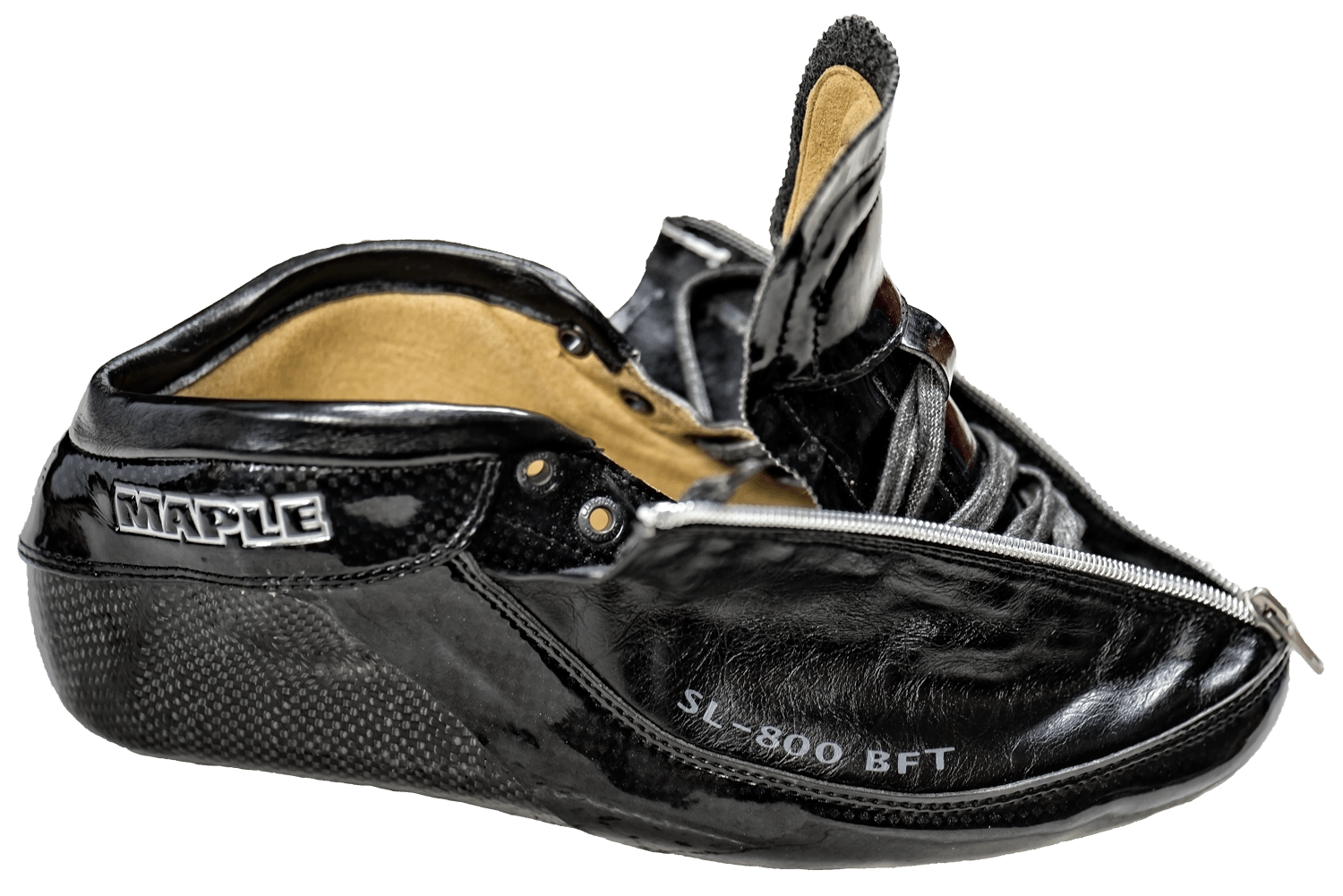
Open the shoes well: loosen the laces and bring the tongue forward.
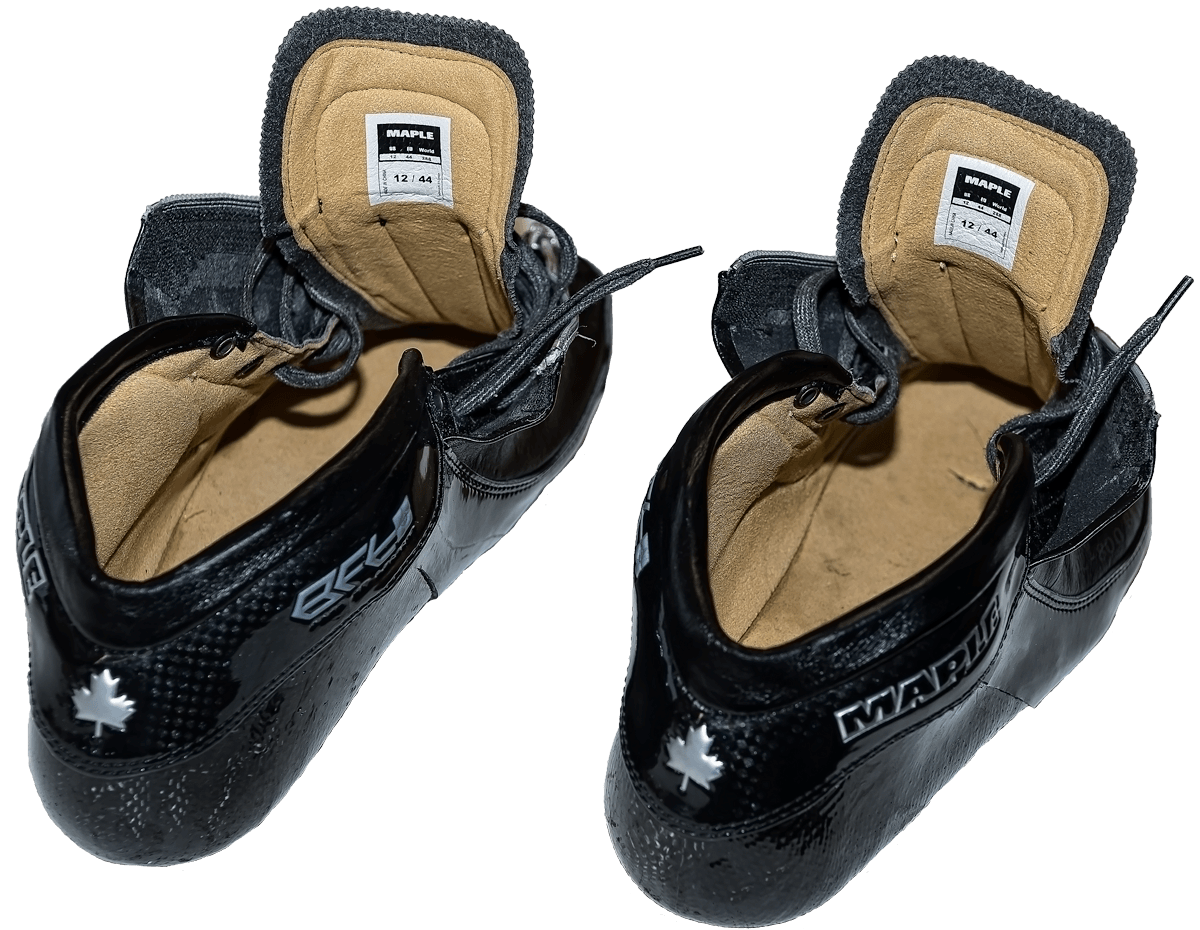
To the oven!
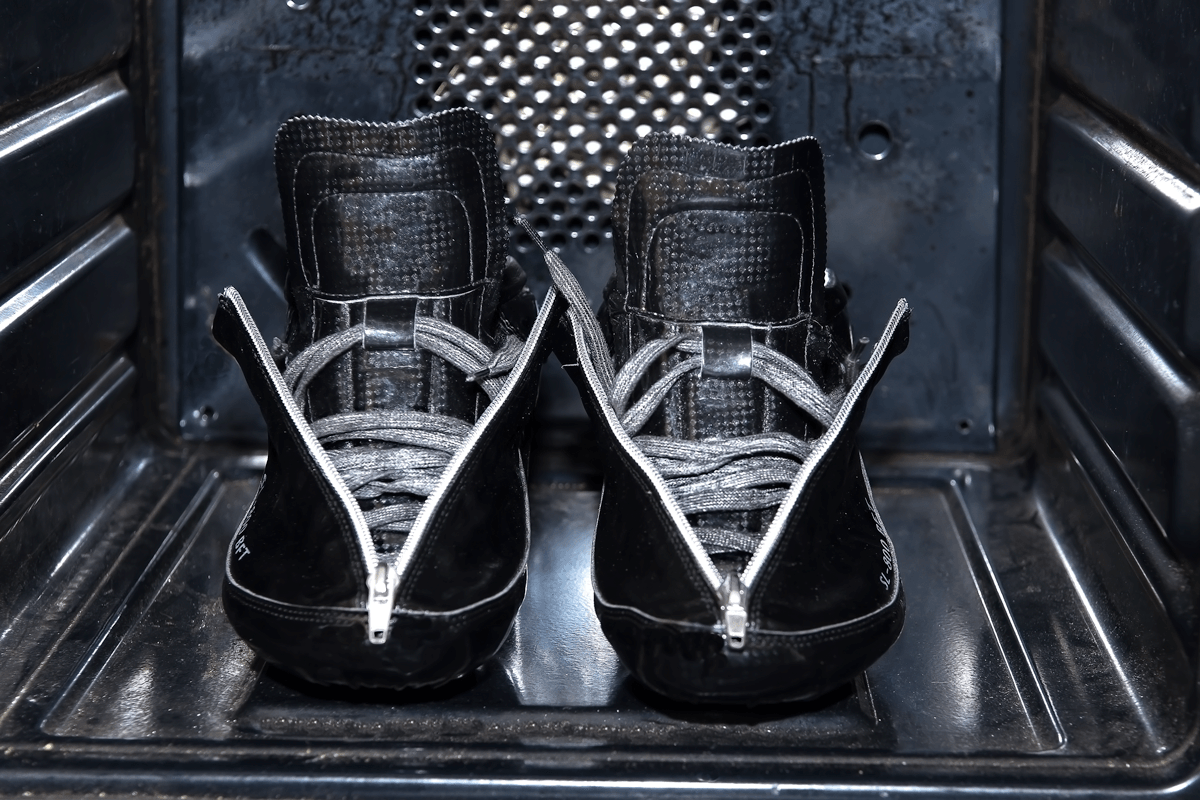
Place the shoe with the nose towards the oven door.
#2 Adjusting the Shoes
Once the shoe has become sufficiently soft, you can gently bend the sides of the shoe open and step into it. It is advisable to wear thin socks. The eyelets of the laces and the buckles are very hot! Be careful that the shoe does not fold inward when putting it on to avoid damage to the material! Also, be cautious with glue edges; if the shoes get too hot, these can come off quickly. Put on both shoes so that they don't cool too quickly. Then lace both shoes up to the top. Tighten the laces, but not too tight. The buckle should not be too tight either. Sit on the edge of a chair. Do not stand on the shoes; this can be harmful to the carbon. Ensure that an angle is created, similar to the ice skate/roller skate position. Sit on the edge of a chair and keep the knees above the toes.
You can then 'knead' the shoes around the ankle joint (see tips for more). After about 10 to 15 minutes, the shoes will have hardened and cooled a bit. You can now take off the shoes.
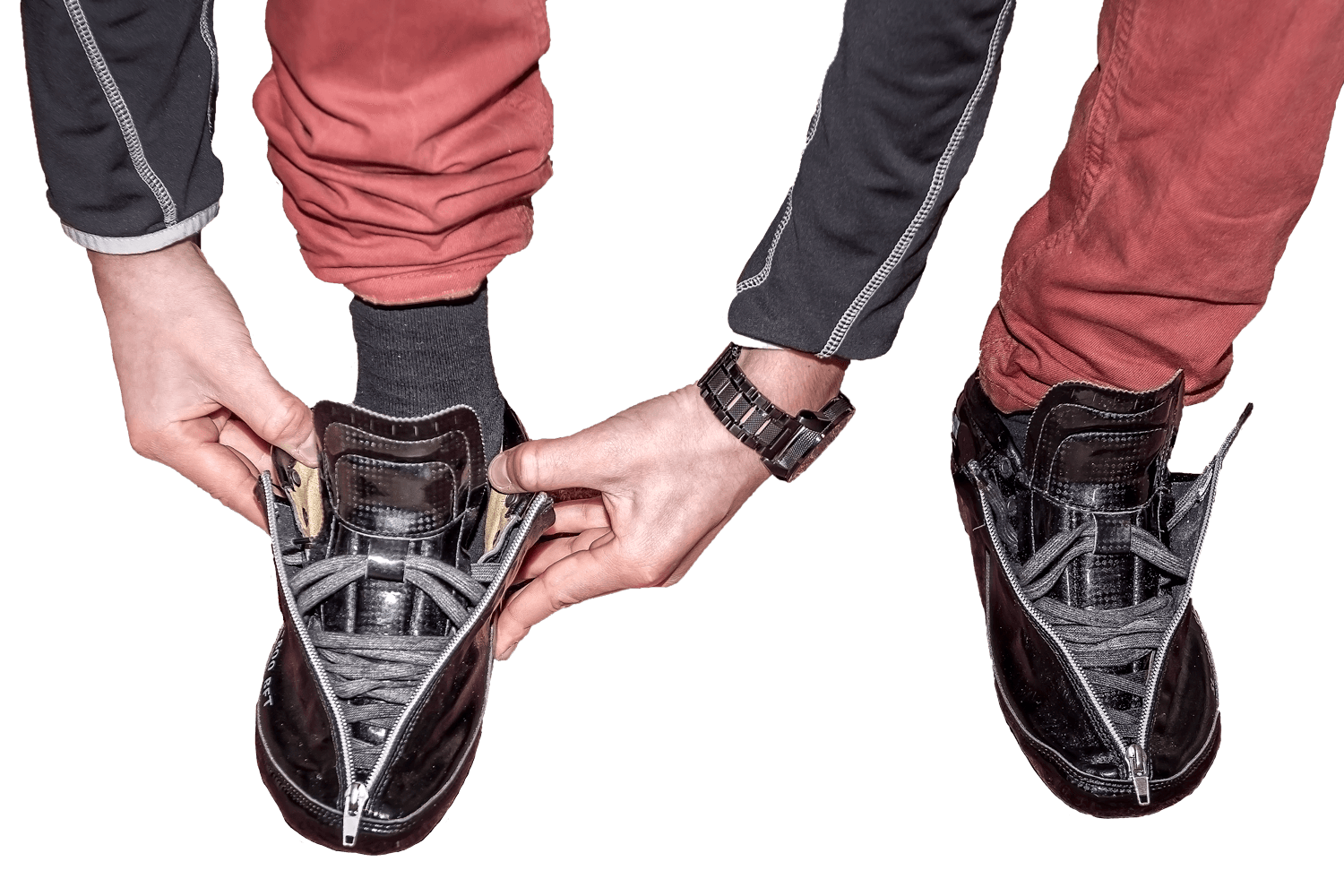
Keep the shoes wide open and make sure they don't fold when you step in!
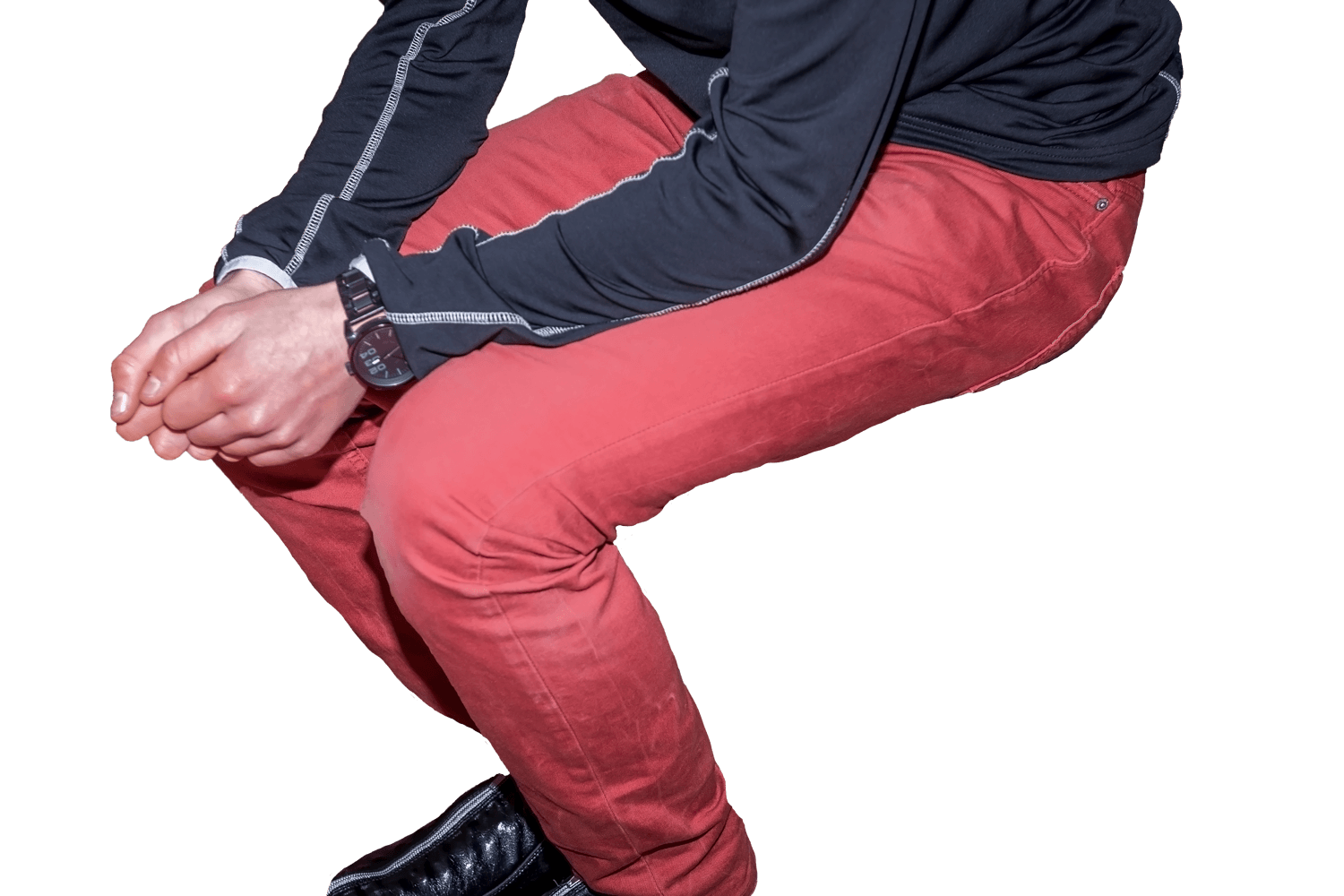
Sitting on a chair, crouching in the ice skate position. Knees above the toes.
Molding with an Ice Skate Blade
It is also possible to mold shoes with mounted blades. Be careful not to scratch or damage the blades. It is best to use a pair of leather protectors around the blades. These are also heat-resistant. Always check afterwards if the blades are still securely attached; sometimes they may come loose due to the heat. Do not put the Viking Nagano Gold shoes with the blades on full tension in the oven (even without the shoes attached). It is best to have this type of shoe molded by our specialists with the right equipment. See tips for more information on this model.
Molding with a Roller Skate Frame
It is also possible to mold shoes with a mounted roller skate frame. Remove the wheels and axles from the frame and carefully place the shoes (with the frame) in the oven. Always check afterwards if the frames are still securely attached; sometimes they may come loose due to the heat.
Tips
If you still experience pressure points after molding, you can heat the shoes again in the oven or with a hairdryer. Be very careful; shoes can quickly develop burn marks in such cases. In such a situation, it is best to have this done by one of our specialists. For advice/questions, you can always contact us!
To shape the shoes well around the ankles, it can be helpful to do this with several people. Each person can concentrate on one shoe.
For molding the Viking Nagano Gold shoes, a separate technique is required. It is best to have our ice skate/roller skate specialists perform this.
A pressure point can arise in various ways. The most common are:
- The foot has too much space, causing friction and blisters.
- The foot has too little space, causing blisters and uncomfortable pressure points.
Never try things yourself; this voids the warranty. For questions, always contact us. Follow the instructions above.